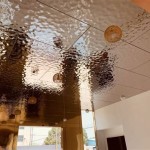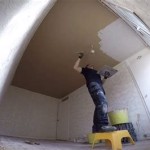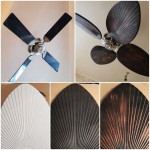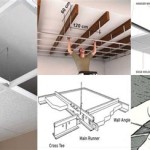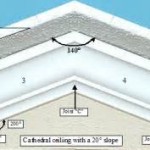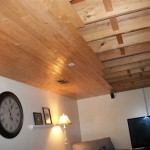Water Stains on Car Ceiling: Causes, Consequences, and Remediation
Water stains on a car's ceiling, also known as the headliner, are a common issue that can detract from the vehicle's aesthetic appeal and potentially indicate more significant underlying problems. Identifying the source of the water intrusion and addressing it promptly is crucial to preventing further damage and costly repairs. These stains are more than a cosmetic nuisance; they can lead to mold growth, electrical damage, and premature deterioration of the car's interior components.
The appearance of water stains typically manifests as discoloration, often appearing as rings, streaks, or blotches. The color can range from a light tan to dark brown, depending on the minerals and contaminants present in the water that caused the stain. Over time, these stains can become more pronounced and widespread, especially if the leak persists. Sometimes, a musty odor accompanies the stains, indicating mold or mildew growth. Proper diagnosis and repair require a systematic approach to identify the leak's origin and implement effective cleaning and preventative measures.
Identifying the Source of the Leak
Pinpointing the origin of the water leak is the first and most vital step in addressing the problem. Several potential sources exist, and a methodical examination is necessary to accurately diagnose the issue. Common culprits include sunroof drains, weather stripping, antenna seals, and windshield or rear window seals.
Sunroof drains are a frequent source of leaks, particularly in vehicles equipped with this feature. Sunroofs are designed with drainage channels to divert water away from the interior. These channels connect to drain tubes that run down the vehicle's pillars, typically exiting near the wheel wells. Over time, these drain tubes can become clogged with debris such as leaves, dirt, and pollen. When the drains become blocked, water can back up and overflow into the car's interior, leading to water stains on the headliner, often near the sunroof area or along the edges of the roof.
Weather stripping, the rubber seals around the doors and windows, provides a barrier against water intrusion. As weather stripping ages, it can become brittle, cracked, or detached, creating gaps that allow water to seep into the cabin. Inspecting the weather stripping for signs of damage, such as tears or hardening, is essential. Applying pressure to the stripping while observing for leaks during a water test can help identify compromised areas. Replacement of damaged weather stripping is a relatively straightforward repair that can significantly reduce water leaks.
The antenna base, often located on the roof of the car, is another potential entry point for water. The seal around the antenna can deteriorate over time, allowing water to penetrate the roof and leak into the interior. Checking the antenna seal for cracks or gaps is a simple diagnostic step. Applying a sealant or replacing the antenna base gasket can resolve this issue.
Windshield and rear window seals are critical for preventing water intrusion. These seals are designed to create a watertight barrier between the glass and the vehicle's body. If the seals are damaged or improperly installed, water can leak into the cabin. Inspecting the perimeter of the windshield and rear window for cracks, gaps, or signs of separation is crucial. The presence of rust around the edges of the glass can also indicate a leak. Repairing or replacing the windshield or rear window seal necessitates professional assistance to ensure proper installation and sealing.
Conducting a water test can help confirm the source of the leak. This involves carefully pouring water over different areas of the car's exterior, such as the sunroof, windows, and antenna, and observing for water intrusion inside the cabin. A helper inside the car can assist in locating the exact point of entry. It is important to use gradual amounts of water and pay attention to where the water is entering the car. The water test should be conducted in a controlled environment to accurately assess the leak's origin. Once the source of the leak has been identified, appropriate repairs can be carried out.
Addressing the Water Stains
Once the leak has been repaired, it is necessary to address the existing water stains on the headliner. Cleaning water stains effectively requires a gentle approach to avoid damaging the delicate fabric or causing further discoloration. A common method involves using a mild cleaning solution, a soft brush or microfiber cloth, and a vacuum cleaner.
The first step is to vacuum the headliner to remove any loose dirt or debris. This prevents the dirt from being ground into the fabric during the cleaning process. A brush attachment can be used to gently loosen any embedded particles. It is important to avoid using excessive force when vacuuming to prevent damage to the headliner.
Next, prepare a mild cleaning solution by mixing a small amount of gentle detergent with warm water. Avoid using harsh chemicals or abrasive cleaners, as they can damage the headliner fabric or cause discoloration. Test the cleaning solution on an inconspicuous area of the headliner to ensure it does not cause any adverse reactions. If the solution is safe, proceed to clean the water stains.
Dampen a soft brush or microfiber cloth with the cleaning solution, ensuring it is not excessively wet. Gently blot the water stains, working from the outside towards the center. Avoid rubbing the stains vigorously, as this can spread the stain or damage the fabric. Apply light pressure and repeat the blotting process until the stain begins to fade. It may be necessary to repeat this process several times to achieve the desired results.
After cleaning the stains, use a dry microfiber cloth to blot the area and remove any excess moisture. Allow the headliner to air dry completely. Avoid using heat sources, such as a hairdryer, to speed up the drying process, as this can cause the fabric to shrink or warp. Open the car windows or doors to improve ventilation and facilitate drying. Check for any remaining moisture and repeat the drying process if necessary.
In some cases, stubborn water stains may require more advanced cleaning techniques. Steam cleaning can be an effective method for removing deep-seated stains and eliminating odors. Steam cleaning uses hot steam to penetrate the fabric and loosen dirt and grime. However, it is crucial to use a professional steam cleaner and follow the manufacturer's instructions carefully to avoid damaging the headliner. Over-saturation with steam can loosen the adhesive holding the headliner in place, leading to sagging.
If the water stains are extensive or the headliner is severely damaged, replacement may be the only viable option. Replacing the headliner is a more complex and costly repair, but it can restore the car's interior to its original condition. In this situation, it is recommended to seek professional assistance from an experienced automotive upholstery shop.
Preventative Measures and Long-Term Maintenance
Once the leak has been repaired and the water stains have been cleaned, implementing preventative measures is essential to avoid future occurrences. Regular maintenance and inspections can help identify potential problems before they escalate into significant issues. Prolonging the life of the car's interior and preventing water damage demands proactive care.
Regularly inspect the sunroof drains, weather stripping, antenna seal, and windshield and rear window seals for signs of damage or deterioration. Clean the sunroof drains periodically to prevent clogs. A simple way to do this is by using a thin, flexible wire or a specialized drain cleaning tool to clear any debris that may be obstructing the drainage channels. Avoid using compressed air, as this can dislodge the drain tubes or damage the drainage system.
Apply a protectant to the weather stripping to keep it pliable and prevent cracking. Silicone-based protectants can help maintain the weather stripping's flexibility and prolong its lifespan. Regularly cleaning the weather stripping with a mild soap and water solution can also help prevent the buildup of dirt and grime.
Park the car in a sheltered area, such as a garage or carport, to protect it from the elements. Exposure to direct sunlight, rain, and snow can accelerate the deterioration of the car's exterior and interior components. Using a car cover can provide additional protection when parking outdoors.
Promptly address any signs of water intrusion, such as dampness, musty odors, or discoloration. Early detection and repair of leaks can prevent further damage and costly repairs. Ignoring water-related issues can lead to more significant problems, such as mold growth, electrical damage, and structural deterioration.
Consider applying a fabric protector to the headliner to make it more resistant to stains and water damage. Fabric protectors create a barrier that repels liquids and prevents them from penetrating the fabric fibers. This can make it easier to clean spills and prevent water stains from forming. Choose a fabric protector that is specifically designed for automotive interiors and follow the manufacturer's instructions carefully.
Regularly vacuuming the car's interior, including the headliner, can help remove dirt, dust, and debris that can contribute to staining. Using a brush attachment can help loosen any embedded particles and improve the effectiveness of the vacuuming process. Maintaining a clean interior can also help prevent the growth of mold and mildew, which can contribute to unpleasant odors and health problems.
Addressing water stains on a car's ceiling involves a multi-faceted approach that includes identifying and repairing the source of the leak, cleaning the existing stains, and implementing preventative measures. By following these guidelines, car owners can effectively address water stains and maintain the appearance and integrity of their vehicle's interior. Proactive maintenance and timely repairs are essential for preventing water damage and prolonging the life of the car.
Cleaning Water Stains In Headliner Sunroof Leak
How Clean Water Stains Off Of Your Vehicles Headliner

Headliner Deep Clean Stain Removal

Diy Car Headliner Water Stain Removal Guaranteed

Water Stains On Headliner Sixth Generation Legacy 2024 Legacygt Com
Cleaning Water Stains In Headliner Sunroof Leak

How To Remove Nasty Water Stains From Car Headliner Using Meguiars In Depth Step By

Stains On 2024 Ceiling Interior Possible Roof Leak Prius

3 Ways To Clean A Car Ceiling Wikihow

Stains On Cars Blamed Ceiling Leaks During Downtown Parking Garage Project
Related Posts

